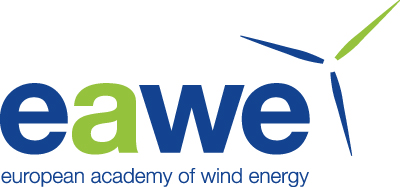the Creative Commons Attribution 4.0 License.
the Creative Commons Attribution 4.0 License.
A Comprehensive Design Methodology of Shared Mooring Line Configurations for Assessing Mooring Costs and Performances of Floating Offshore Wind Turbines
Abstract. Shared moorings possess the potential to create more cost-effective designs for large-scale deployments of floating wind farms than conventional mooring configurations. Existing stiffness linearization methods are valuable for conceptual designs, but are limited by the assumption of small floater offsets, which can lead to impractical mooring designs. Additionally, current studies lack consensus on determining offset limits. To address these limitations and improve the reliability of shared mooring designs, this paper presents a comprehensive design methodology. This approach synthesizes realistic line characteristics, considers nonlinear mooring stiffness, incorporates multiple design constraints, and integrates wind-farm layouts to achieve diverse design objectives. By employing the design method, both conventional and shared mooring designs are generated, and the cost-saving potential of shared moorings is revealed. The mooring cost distribution for shared mooring designs skews towards lower costs compared to conventional designs, showing 11 % and 14 % savings in the maximum material costs, respectively, for the two-turbine and three-turbine arrays in water depths of 200 m. This updates the findings of existing linear methods that shared moorings can be cost-effective in water depths exceeding 400 m. In addition, dynamic simulations demonstrate that the distance-driven shared mooring line configuration improves the mean power production by 2.3 % for the downstream turbine in the three-turbine array, despite a notable increase in the horizontal offset of the downstream model and a shortened mooring fatigue life of the upstream model. This paper provides insights into shared mooring designs and highlights the advantages of shared mooring designs in terms of material cost saving and power improvement, as well as the challenges related to platform motion and mooring line fatigue. These findings contribute to the development of cost-effective mooring solutions for floating wind projects.
This preprint has been withdrawn.
-
Withdrawal notice
This preprint has been withdrawn.
-
Preprint
(2654 KB)
Interactive discussion
Status: closed
-
RC1: 'Comment on wes-2024-44', Anonymous Referee #1, 28 Jun 2024
The comment was uploaded in the form of a supplement: https://wes.copernicus.org/preprints/wes-2024-44/wes-2024-44-RC1-supplement.pdfCitation: https://doi.org/
10.5194/wes-2024-44-RC1 -
RC2: 'Comment on wes-2024-44', Anonymous Referee #2, 02 Jul 2024
This manuscript presents a preliminary design approach for shared mooring systems focusing on static responses and material costs. Results of dynamic analysis are presented and discussed for selected design candidates.
However, whether the selected design sea states are representative for mooring design at the considered offshore site is questionable. Additional information is needed.
Some additional comments are as follows:
1. In Sec.2, how are the two wind speeds selected? Do they refer to certain return period? Please provide more information.
2. How will current affect the design results?
3. In Sec.3.5, how the FOWT offsets are obtained for different mooring configurations in the design space? Please add more details.
4. Why is static turbine spacing selected as an independent design driver/objective? Please explain.
5. How does the mooring design approach proposed in this study align with the current rules and regulations for mooring design of floating offshore wind turbines? Please comment.
6. This study focuses on a pilot-scale floating wind farm with 2-3 floating wind turbines. How to generalize the findings and conclusions in this study to commercial-size floating wind farms, i.e., with increased farm size?Citation: https://doi.org/10.5194/wes-2024-44-RC2 - AC1: 'Comment on wes-2024-44', Qi Pan, 08 Aug 2024
Interactive discussion
Status: closed
-
RC1: 'Comment on wes-2024-44', Anonymous Referee #1, 28 Jun 2024
The comment was uploaded in the form of a supplement: https://wes.copernicus.org/preprints/wes-2024-44/wes-2024-44-RC1-supplement.pdf
-
RC2: 'Comment on wes-2024-44', Anonymous Referee #2, 02 Jul 2024
This manuscript presents a preliminary design approach for shared mooring systems focusing on static responses and material costs. Results of dynamic analysis are presented and discussed for selected design candidates.
However, whether the selected design sea states are representative for mooring design at the considered offshore site is questionable. Additional information is needed.
Some additional comments are as follows:
1. In Sec.2, how are the two wind speeds selected? Do they refer to certain return period? Please provide more information.
2. How will current affect the design results?
3. In Sec.3.5, how the FOWT offsets are obtained for different mooring configurations in the design space? Please add more details.
4. Why is static turbine spacing selected as an independent design driver/objective? Please explain.
5. How does the mooring design approach proposed in this study align with the current rules and regulations for mooring design of floating offshore wind turbines? Please comment.
6. This study focuses on a pilot-scale floating wind farm with 2-3 floating wind turbines. How to generalize the findings and conclusions in this study to commercial-size floating wind farms, i.e., with increased farm size?Citation: https://doi.org/10.5194/wes-2024-44-RC2 - AC1: 'Comment on wes-2024-44', Qi Pan, 08 Aug 2024
Viewed
| HTML | XML | Total | BibTeX | EndNote | |
|---|---|---|---|---|---|
| 966 | 233 | 43 | 1,242 | 64 | 91 |
- HTML: 966
- PDF: 233
- XML: 43
- Total: 1,242
- BibTeX: 64
- EndNote: 91
Viewed (geographical distribution)
| Country | # | Views | % |
|---|
| Total: | 0 |
| HTML: | 0 |
| PDF: | 0 |
| XML: | 0 |
- 1




